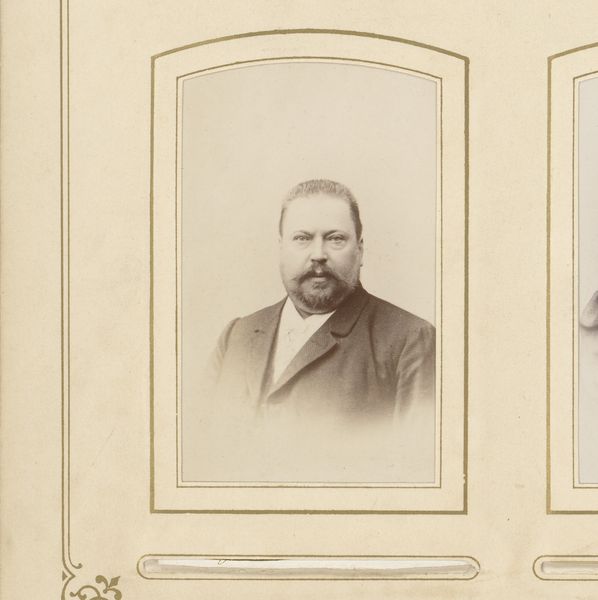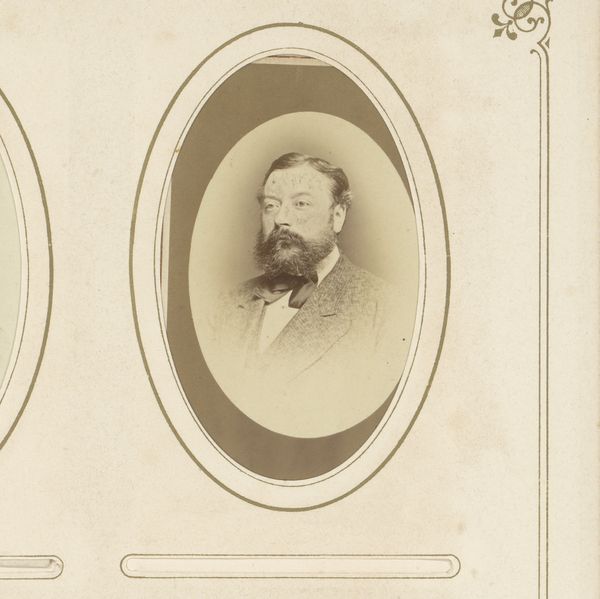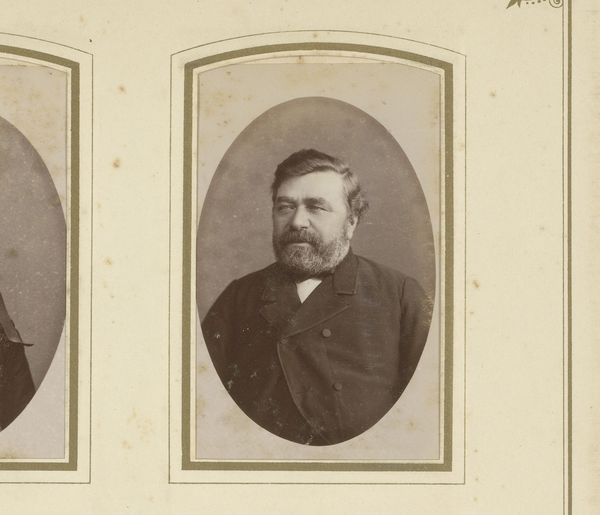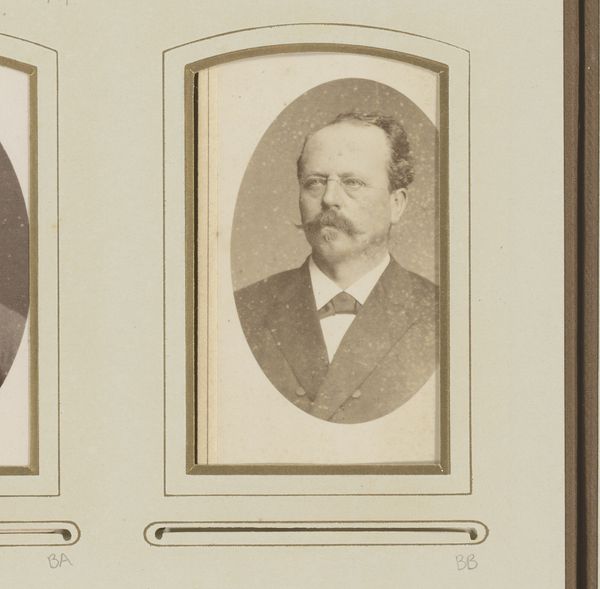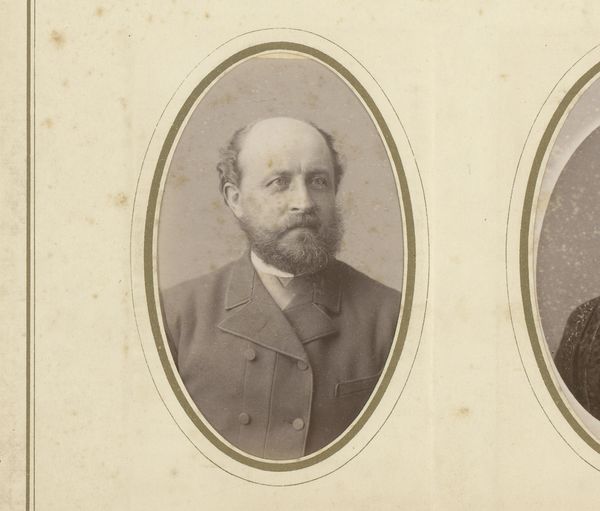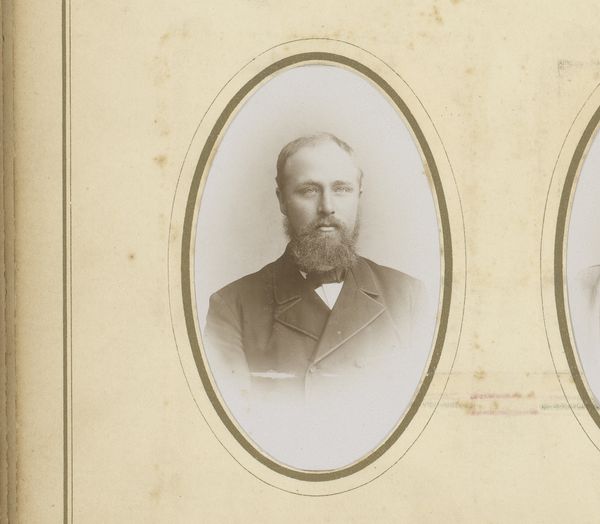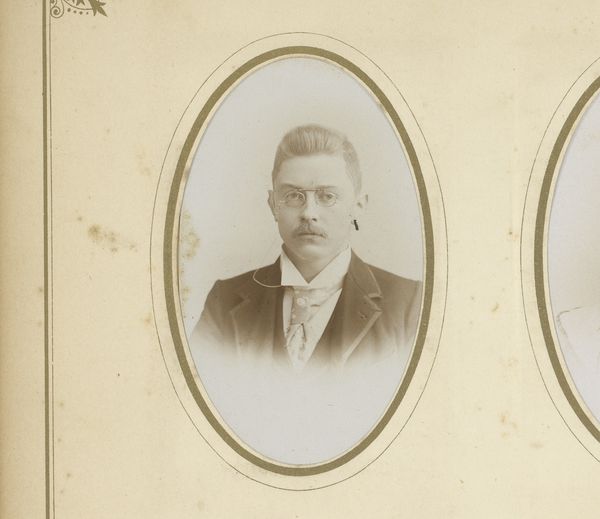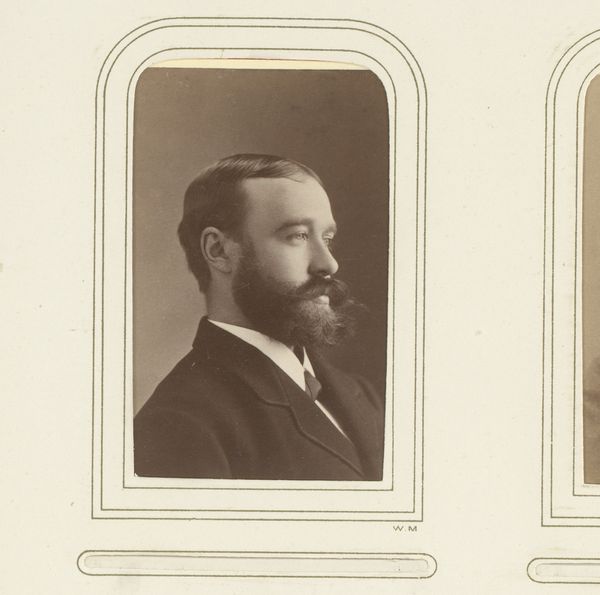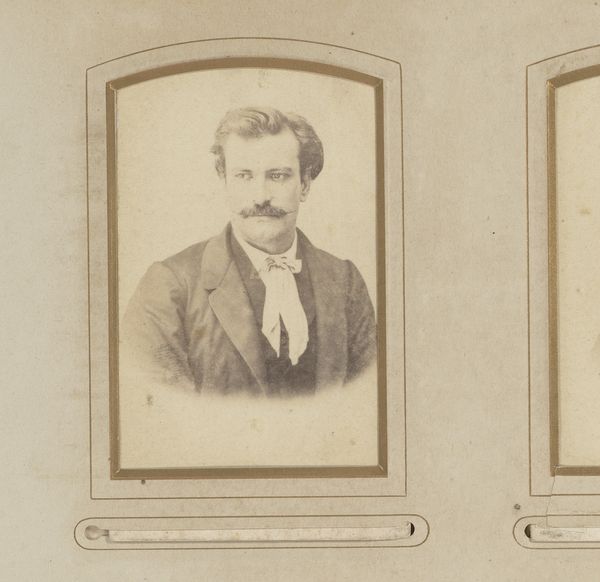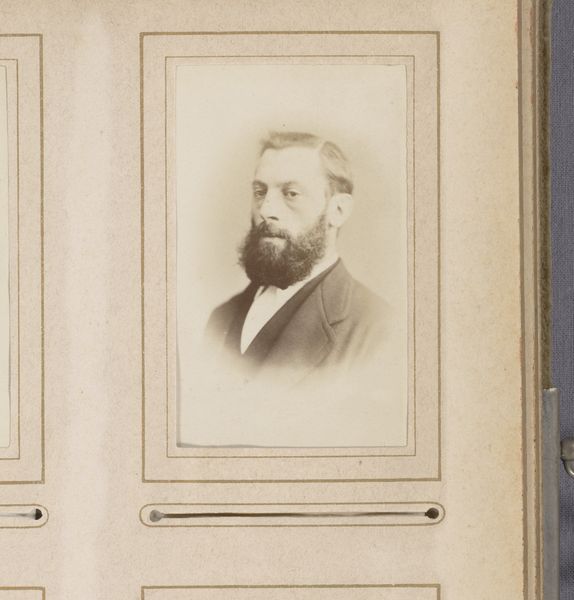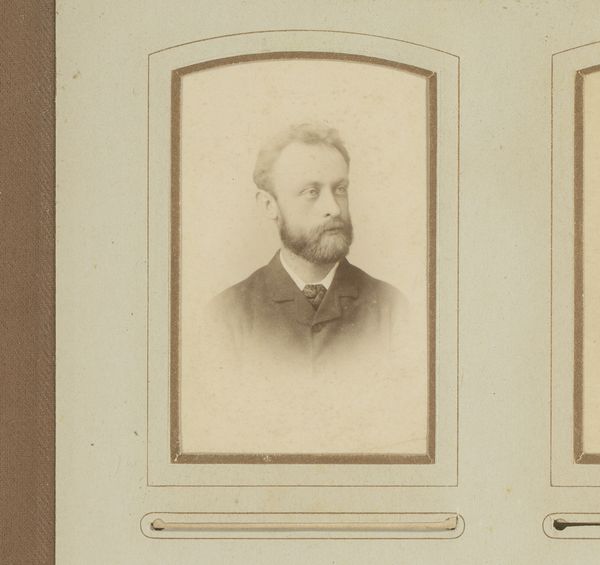
photography, gelatin-silver-print
#
portrait
#
photography
#
historical photography
#
gelatin-silver-print
Dimensions: height 85 mm, width 50 mm
Copyright: Rijks Museum: Open Domain
Curator: Standing before us is "Portret van een man met snor en baard"—or "Portrait of a man with mustache and beard"—a gelatin-silver print created sometime between 1861 and 1874, currently residing here at the Rijksmuseum. It's by Albert Greiner, and it captures a certain... gravitas, wouldn’t you say? Editor: Yes, “gravitas” feels right. There’s a solemnity, almost a melancholy, in his gaze. The soft sepia tones add to that feeling. He appears both dignified and slightly world-weary, as if burdened by some unspoken knowledge. Curator: Precisely. I find the framing curious—that oval vignette within the larger card. It lends a formality, a deliberate sense of historical preservation. Do you suppose that choice had an effect on how this portrait was consumed and perceived at that time? Editor: Undoubtedly. The oval shape echoes the styles of painted portraiture common before photography's rise. Greiner might be asserting photography’s ability to capture not just likeness but also status and character, much like painting did for the upper classes. And this choice excludes him from a world where photographs of different people will soon be hung together. Curator: The man’s attire also speaks volumes. The dark jacket, neatly tied bow—he is a gentleman of some standing, but the gaze in his eyes is what truly holds my attention. Almost challenging us in the future. I wonder about his life, his struggles. Editor: The fact that the print is gelatin-silver adds a layer, too. It's not just a picture; it’s an object, carefully crafted. Consider also how this technology began to democratize image making in a way that had social implications for visual economies everywhere. Photography also led to the use of images to both construct identity and reinforce social status. Curator: I wonder about that faint initialed marking down below, the "BB." Do you have any notions? Editor: Most likely belonging to one of the photographic studios working in that era, serving to show what brand created such artwork. Curator: True, true. All this talk has allowed the piece to unravel into an image far greater than its first impressions let on, an exciting treat, wouldn't you say? Editor: I agree completely; the deeper we dig into context and process, the more eloquent a photograph like this becomes.
Comments
No comments
Be the first to comment and join the conversation on the ultimate creative platform.
